Click to view our Accessibility Statement or contact us with accessibility-related questions






Keymap optimization: language statistics and important indicators

search
close
Sort by: Newest
keyboard_arrow_down
Let’s get the conversation started!
Be the first to comment.
PRODUCTS YOU MAY LIKE
Trending Posts in Mechanical Keyboards

jdsvdropper
Drop ENTER keyboard with DCX Sleeper Mac variants and Rocky Bird
Black Drop ENTER keyboard with DCX Sleeper Mac variants for the Option and Command keys, and Rocky Bird red and black DCX keycaps.
Nov 19, 2024
AngryTank
Favorite Artisans
COME FORTH SHENRON!
Purple, Dragon Balls, and Seta! What more does a simple man need?
Nov 17, 2024
InsufferablePedant
ZealPC Aqua Zilents
Please ignore the filthy keyboard, it's been on a shelf for a minute.
Nov 15, 2024
Kyle-L
How to sell things on Drop & How Drop charge them?
Hi , this Kyle from China. Since a month ago, my team wanted to build a brand to produce the high quality of mechanical keyboard and headset to sell aboard. Now we already got the license to do so, and we can't wait to bring our products to meet everyone. But the products are still in the period of designing, it would take some time :( There are some questions we can't find the ways to solve - how to sell keyboard on Drop, and the details about how Drop charge per product? - Actually I sent an email to Drop Studio for some questions, but I didn't receive the answer.( Drop Studio also mentioned that they can contact me only if they were interested in my design / products ). So I'm here ask for help. If anyone can answer my question, I would really appreciate it :)
Nov 14, 2024

Neekolas714
Kicks & Keebs
Alpha Bravo Smoke
Finally finished my Keychron V5. Smooth, beautiful and stylish. What else could there be?
Nov 13, 2024

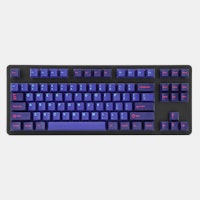
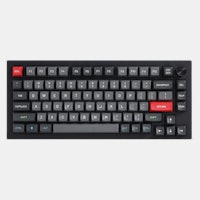
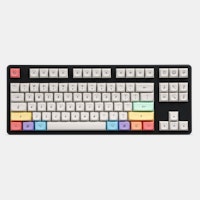
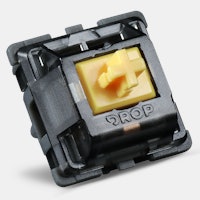

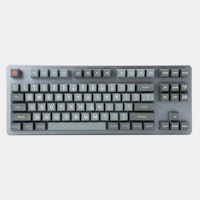
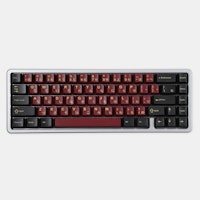
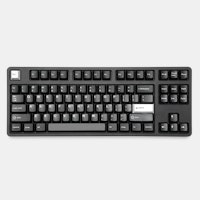
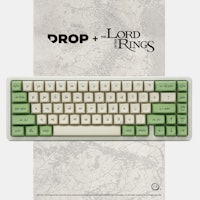








Image: Letter frequencies of this very article
Trigrams, similarly, are combinations of three characters. They are primarily used to evaluate the frequency of redirects (more on this later) but can also be used for assessing rolls and hand alternation. Using heat maps to represent letter frequencies is an excellent way to highlight one of the most striking shortcomings of QWERTY:
Image: Letter frequencies vs QWERTY...
Home row, home box, home positions Knowing the most frequent letters is important so you can put them on the home row. You can think of either the 8 home positions, without the inner/outer keys of the home row, or there's another approach called the home box and its variants (including some easy-to-reach keys of the top and bottom rows as well).
Image: Characters in the home positions - QWERTY (orange) vs Colemak (blue) All in all, our goal is to place the most common alphas in the best and most comfortable places. This way you can ensure that frequently used letters are right under your fingertips in their resting positions, minimizing the need to leave the home row. Finger travel Since we have all the necessary dimensions of a keyboard, we can calculate the exact distance our fingers travel while typing a specific text. This is an interesting metric that can be used to describe how easily a text can be typed. Different physical layouts may significantly affect this -- such as the standard layout vs column-staggered splits --, but also standard spacing vs Choc or CFX. That said, your keymap will make a huge difference! Row changes Leaving the home row may not sound that scary -- but it is. (Boo!) It might seem like a minor inconvenience, and while there will certainly be much worse key combinations on our journey, minimizing row changes is still important. Row changes can also increase typos, especially when you're trying to find your way back to the home positions. Hurdles (row skip)
August Dvorak, the creator of the Dvorak layout, referred to this as 'hurdle', so let's stick with that terminology. It represents the worst kind of row change, where you also skip one or more rows. Consider typing 'minimum' or 'December'. It's a slow and uncomfortable pattern that you should aim to avoid.
Image: Row skips with QWERTY (orange) vs Colemak (blue)
Same finger keypress, SFB Pressing two consecutive keys with the same finger is relatively slow and inefficient. Some of these occurrences can be avoided by rearranging your keys, while others are naturally ingrained in the language, such as double consonants or vowels. Typing out 'Mississippi' in QWERTY vs any optimized layout won't really make any difference with regards to SFBs (Same Finger Bigrams), because, well, you have to hit the very same key wherever it's located on your keyboard. (Pro tip: you can define a dedicated "repeat" key for all these occurrences, but this is really nerdy territory.)
Image: Same finger keypresses - QWERTY (orange) vs Colemak (blue), and natural SFBs (magenta) However, the number of other SFBs can be drastically decreased with proper planning and optimization. Hand alternation vs rolls Here are two antagonistic indicators, so let's cover these together. Alternating hands is preferred by some, as it can create a more rhythmic typing experience. For example, placing all the vowels on one side of the keyboard (as seen in the Dvorak layout and many others) is a good indication of optimization for alternation. However, there are also rolls, which are my personal favorites. Rolls are those smooth sequences that you can execute lightning-fast by rolling fingers from the same hand. I hope you know what I'm talking about because I find most definitions out there unsatisfactory -- too lose or vague for no reason. Instead, I prefer to define a select few 'winner' moves, excluding not just stretches and scissors, but also all the combinations involving the pinkies.
Image: Rolls - QWERTY (orange) vs custom1 (cyan) vs custom2 (green) keymap. QWERTY is quite bad at rolls, but maybe 'er' and 'ou' could be mentioned as common examples, and 'few' as a stacked roll ("onehand"). In the example above I generated a custom but relatively balanced keymap favoring rolls while penalizing redirects (cyan), and a second one clearly optimized for rolls (green). Obviously, alternation kills rolls and vice versa, so you either strike a good balance or optimize for one at the expense of the other. However, hyper-focusing on rolls may lead to unwanted redirects -- they start to appear in the previous custom2 (green) example as well: 'that'. Redirects What are redirects? They are pure evil. If you optimize your keymap with the goal of maximizing rolls, you may end up with a lot of redirects -- changing directions while typing out a single trigram. For example, 'sad'. In theory, it consists of two roll(ish) patterns, but in practice, it's a really awkward and uncomfortable movement. Inner/outer keypress, lateral stretch Keypresses in the outer or inner columns (using the index or pinky fingers) are inconvenient on their own, but when two of these are combined, it can be literally painful. In the English alphabet, there are relatively few letters, but in other languages with many accented or national characters, frequently used letters often end up on these keys. In such cases, minimizing lateral stretch becomes especially important. Other indicators Of course there are many more metrics and indicators: scissors, disjoint finger bigrams, hand and finger balance, specific finger patters, etc. You can also come up with original indices for your own optimization process. But the key point is that when comparing two layouts, you need to consider all the important indices simultaneously. As we've seen, some of these metrics are antagonistic or mutually exclusive, meaning that improving metric A will lead to a decline in metric B. Layout optimization is all about this tricky process of prioritizing, balancing, and testing. Summary So, we've covered the most important indicators. You can generate letter frequencies and understand concepts like SFBs, alternation, rolls, hurdles, etc. Now we're ready to use this knowledge to quickly evaluate layouts and to compare your freshly baked keymaps with each other or with well-known reference layouts. After getting familiar with the basics, we can finally begin actual layout optimization -- yay! -- starting on an intuitive level. How exactly? We'll explore that next time!